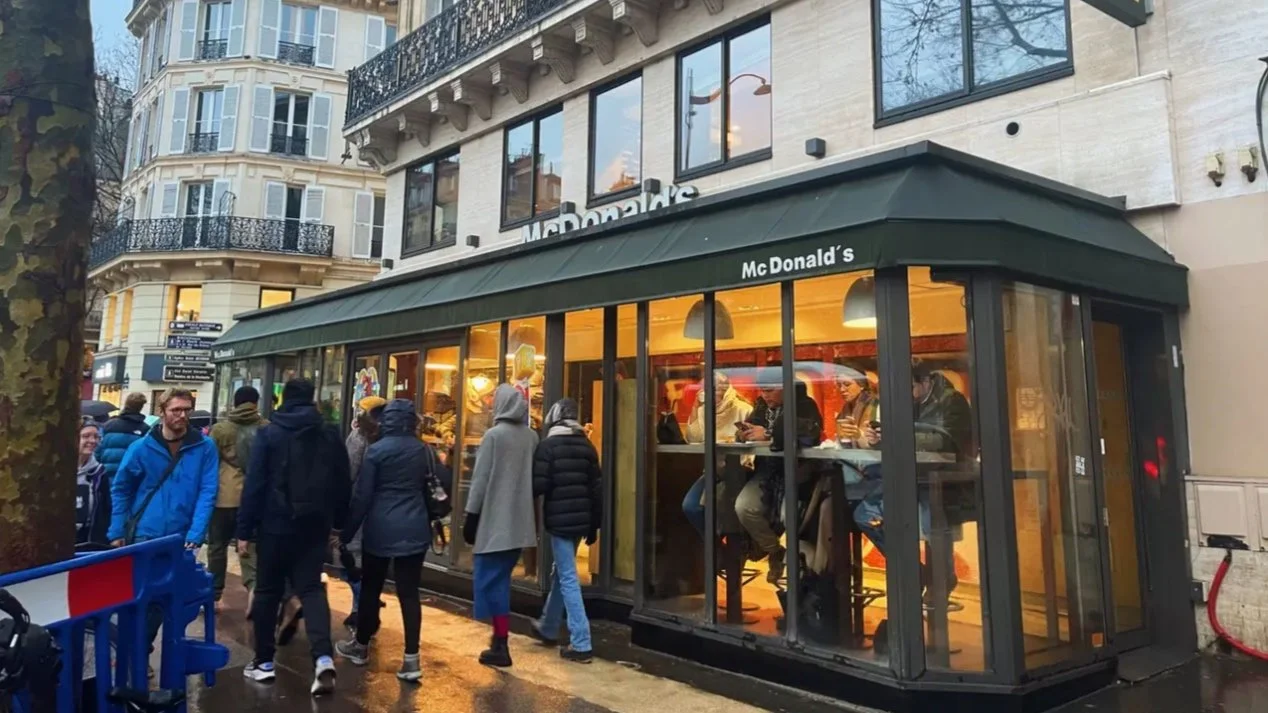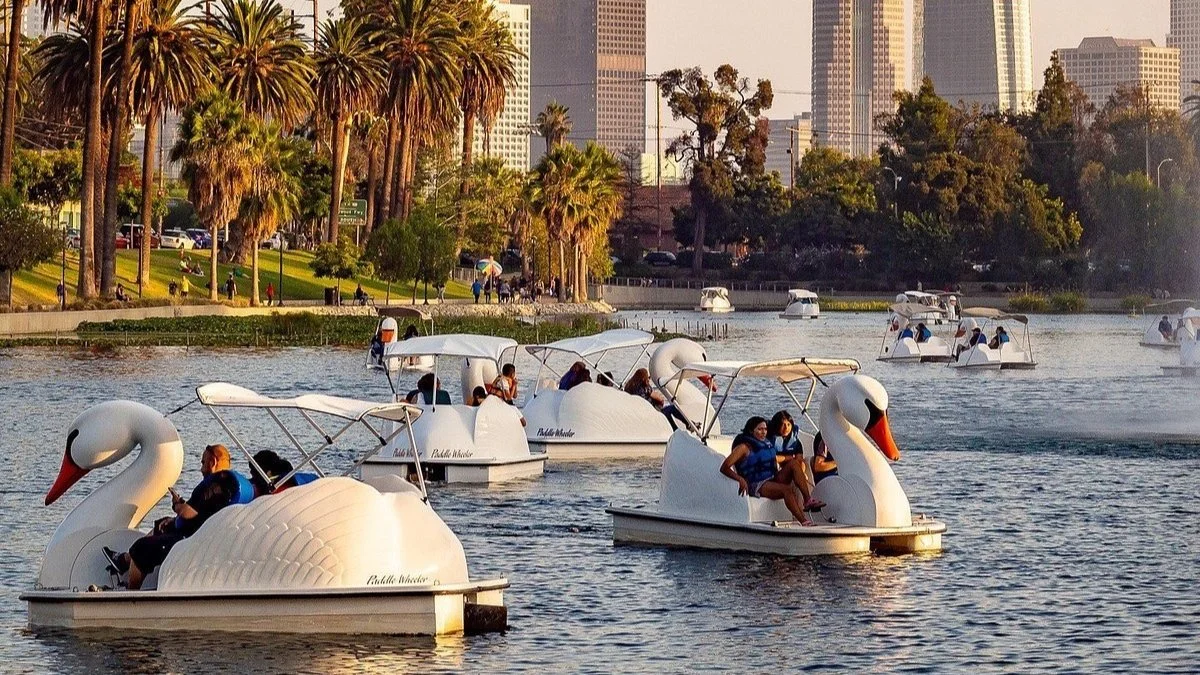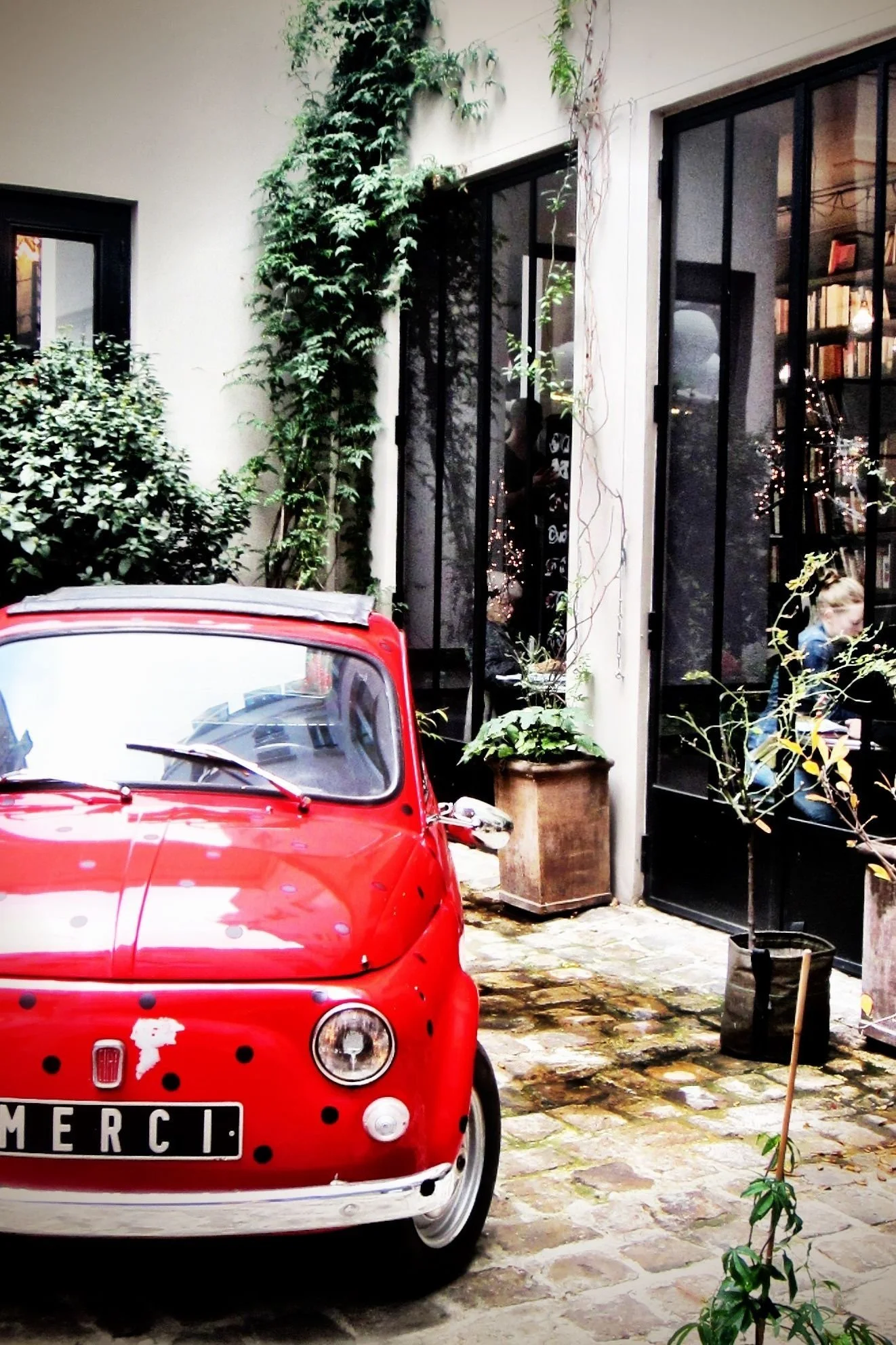On Density
I hope your Brat Summer has been everything you hoped it would. Maybe even as good as Glenn Powell’s. My summer travels are nearly over – I started this note in Boston and I’m finishing it in Tulsa—and the high school year for my junior and senior daughters starts in just two weeks. Alas along the way I didn’t get to Paris and I feel like I’m the only Atlantan that didn’t.
At Revel we like to say that making destination retail is like making a movie. First you have to ask who the patron is: who are you making this movie for? Few mixed-use developers seem to ask the next question: is the patron even there? I promise you don’t have enough office workers and residents in your building to make a true retail destination work. How many people do you need? It turns out at least 11,000 people, preferably in no more than 1,100 acres. Let me explain.
First, why 11,000 people? A lot of reasons. Your average Publix needs 11,000 full-time customers. Excluding contractors your average Home Depot does too. 11,000 people would be 3,500 families with 2,000 school-age kids, enough for all twelve grades plus kindergarten. Those kindergarteners don’t spend like boomers, but if 11,000 people spent $30 a month each they’d keep a mid-sized pharmacy afloat. 11,000 Americans will spend about $8.5M dining out, equal to the annual sales of a single Chick Fil A, which is far better than the four McDonald’s it would take to sell that much food.
Unless of course they were French McDonald’s
Why ten people per acre? As the Paris Olympics unfurl it is useful here to consider the Fifteen Minute City, the idée fixe of urbanists and Seine-swimming Parisian mayors and the bane of climate-denying conspiracy theorists everywhere. The idea is simple enough: a true city has everything you need – retail, restaurants, entertainment, schools, a Chick Fil A— within a 15-min walk or bike-ride. Dust off your high school geometry and you’ll find a 15-min city would be about 1,100 acres.
11,00o people over 1,100 acres: voila. Ten people per acre is the magic number where urbanity really starts. Let ‘s take a tour of cool American neighborhoods to show you what I mean.
We’ll start in my neighborhood in Atlanta. It’s the lowest of low density, and it isn’t cool. Only three people live here per acre. In no way is it walkable. Neighbors drive to each other’s homes. If you walk down a sidewalk without Hokas and earbuds someone will ask if car broke down (or they’ll shoot you).
As you get a little denser the neighborhoods start to change. East Nashville is a synonym for Brooklyn, but at only seven people per acre it still rocks a sub-urban density. Suburban-style commercial on Gallatin dominates, as do miles of cars with Kentucky and Ohio license plates on weekends. But there is a great old commercial core, and they have enough people to make a place: almost 20,000 full time residents, well over our magic 11,000 number, even if a lot of them have to drive to Chopper Tiki.
Admittedly worth driving to
At to 15 to 20 residents per acre you start to get some real walkability. Short North Columbus, Georgetown DC, Montrose Houston and my old Virginia Highland Atlanta neighborhood all sit here (universities help those first two). Plenty of tourists still come but now you’ve got a steady weeknight restaurant business and you can support a grocery and a pharmacy and maybe even a little hardware store. Residences are largely single-family homes, but on smaller 50-foot lots and with a lot less parking.
Just west of VaHi is the area around Ponce City Market. This part of town, like Uptown Dallas and Wynwood Miami, has 20 to 25 residents per acre and it feels different. There are pedestrians on the streets. A good amount of commercial space reduces the area available for residential uses; buildings are more mid-rise as a result. But though they’re dense places they’re small, and don’t have enough residents to support all of that office and retail. People have to commute by bike and scooter and shuttle and trolley. And car. Lots of space and money has to go to parking cars.
It doesn’t have to be that way. Fly west on our imaginary tour to Echo Park in LA. Cool local shops, fun restaurants, cute bungalows, a Vons and even swan boats. With 15,000 core area residents across 620 acres (26 people per acre) it is the perfect mix of size and scale, and it shows that achieving this type of density doesn’t require mid-rises and parking decks, or even transit. You can create a lovely streetscape in a dense environment if you cut down on private yards and storing cars for free. It turns out people don’t always want or need either.
Swans > cars
At 30 to 40 people per acre you’re really cooking. Wicker Park in Chicago packs 17,000 residents into an area smaller than Echo Park. It has all the things you might want and the retail rents to prove it. Head south to Cincinnati to see why density and total population are equally important. Over The Rhine is a master class in how to thoughtfully redevelop a dense urban neighborhood. But the 3,600 residents aren’t enough to support all of the things that make places great. Visitors have to drive in for most businesses to survive. If and when they stop coming as often (see also: Deep Ellum, H Street) then the retail suffers. Urban development isn’t always a one-way street.
There aren’t too many great places in America where the population gets much denser than that. The Richmond District in San Fran is about 45 people per acre. North of Massachusetts Ave, Dupont Circle runs 50-60. River North in Chicago is around 90. The entire island of Manhattan tops our American list at 110 people per acre.
It doesn’t take tall towers and million-dollar condos to make great places. It just takes people (11K+) at a decent density, and counterintuitively not a lot of acres for parking in order to make it all walkable. At the end of the day, that is what people pay you the big bucks for. When you’re planning that next mixed-use project, take a minute to think about how many people live in the immediate area, and maybe push on your city council to let you add more residents than you originally planned.
And Paris, when you go, comes in at about 80 residents per acre inside the périphérique. A lovely urban fabric indeed.
What We’re Working On. Did I tell you we started a restaurant company? We started a restaurant company (admittedly four years ago). It’s called STHRN Hospitality Company. You’ve heard me talk before about how restaurant and landlord economics don’t always align, and so my partners and I set out to do something about it. STHRN manages bars, restaurants, cafes, clubs and food halls for building owners. If you’ve got a lot of restaurants in your project, you should collect a lot of rent. But if you’ve only got one then you should own it, and we’d be happy to show you how.
Ten Great Things You Have To Try The Next Time You’re In Paris
Stay at the Jeu De Paume Hotel. This small converted 17th C royal tennis court on Isle St Louis is lovely. Close to everything, yet away from the tourist crush. The owners are often there, as is their loyal lobby dog Lemon.
Visit. To celebrate the 150th anniversary of the first-ever Impressionist exhibit, the Orsay is putting on a blockbuster show. Bad news: it ends in September. Good News: it comes to DC in the fall.
Merci. “Concept store” doesn’t do it justice. Furniture, clothes, jewelry, food pop ups and even used books at the edge of the 4th and 11th
Bourse De Commerce. François Pinault renovated this 18th C stock exchange to house his personal collection (as one does) and rotating contemporary art. Bonus: it’s next to the world’s greatest kitchen store, E Dehillerin.
Le Marche Des Enfants Rouge. Of course I’m going to put a market on this list. Especially when it’s the oldest in Europe and also fantastic.
Eat. Dinner almost always needs a reservation, and it doesn’t hurt to have one for lunch. Except at L’as Du Fallafel, about the only walk-up window in Paris and also easily the best falafel you’ll ever have.
Le Cinq-Mars. A Banks family favorite. Next to the Orsay, a morning at the museum plus CM for lunch is the pro move. You’ll be the only Americans in the joint.
Ten years ago Le Clown Bar blew Parisians’ minds. Now modern French cooking in old restaurant spaces is the norm, but Clown still does it better than anyone else.
Clamato. You can’t get into three-star Septime but that’s okay because their seafood-focused Clamato in the 11th is a better (more laid back) experience anyway. Septime La Cave around the corner for natural wine before.
Thanks for reading! If you’ve enjoyed this feel free to forward to a friend who might also.
For those new here, I run a retail development and consulting shop in Atlanta. Our mission is to make great retail places, and I write regularly about commercial real estate through that lens.
If you’ve got a mixed-use project that could use some creative thinking — or need someone to go with you to Paris — please reach out. I’d love to hear from you.






